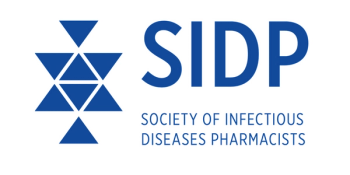Updated April 7, 2016 at 9:00 AM EST.**
What You Need to Know about Elizabethkingia anophelis
Eighteen Wisconsin residents who have been struck with bloodstream infections caused by the Elizabethkingia anophelis bacteria, have died. Officials are uncertain whether these deaths are due to the infection or other serious underlying health conditions.
Elizabethkingia was originally named Flavobacterium meningosepticum by Elizabeth O. King, a bacteriologist at the US Centers for Disease Control and Prevention (CDC) who studied meningitis in infants, but was later reclassified as Chryseobacterium. In 2005, the bacteria was placed in its own genus, Elizabethkingia. E. anophelis was recognized as a new species in 2011. The CDC has begun testing historical Elizabethkingia isolates and has found that about half of the historical Elizabethkingia meningoseptica specimens tested were in fact E. anophelis infections.
According to a statement released by the Wisconsin Department of Health Services (DHS), the first suspected cases of E. anophelis infection were reported on November 1, 2015. On January 5, 2016, when a total of six potential cases had been reported, statewide surveillance was set up and healthcare providers, infection preventionists, and laboratories were notified of the cases as well as provided with treatment guidance. As of March 11, 2016, 48 cases of Elizabethkingia anophelis infections have been reported. The majority of patients who are infected are over 65 years of age. The source of infection has yet to be determined, however, the outbreak is currently being investigated by the State’s Division of Public Health (DPH).
Patients with E. anophelis-linked illnesses usually present with:
- Fever
- Shortness of breath
- Chills
- Cellulitis
In a Q&A session concerning the outbreak, Dr. Nasia Safdar, a University of Wisconsin (UW) Health infectious disease specialist and UW Hospital medical director of infection control, described E. anophelis as a “water-based bacteria.” She declared that this outbreak is particularly alarming since the bacteria rarely causes disease in humans and that this is an unusually large number of infections.
Patients with the following conditions are most susceptible to infection by these opportunistic pathogens:
- Diabetes mellitus
- Alcohol dependence
- Alcoholic cirrhosis
- Immune compromising conditions
- Chronic renal disease
- Patients on immunosuppressive treatments
- End-stage renal disease patients on dialysis
A study published in the February 2015 issue of Emerging Infectious Diseases reports that the bacteria was discovered in the midgut of the Anopheles gambiae mosquito in 2011. E. anophelis was previously reported to cause neonatal meningitis in the Central African Republic, as well as nosocomial infections in the intensive care unit (ICU) in Singapore in 2012.
The DHS reports that, “Although Elizabethkingia are multidrug-resistant bacteria, antimicrobial susceptibility testing (AST) conducted at clinical microbiology laboratories in Wisconsin of at least 6 isolates of Elizabethkingia with the outbreak PFGE [Pulsed-Field Gel Electrophoresis] pattern, demonstrated most of the isolates tested are susceptible to trimethoprim/sulfamethoxazole, fluoroquinolones, and piperacillin/tazobactam. The medical literature suggests combination treatment with these agents may be more effective than monotherapy, and the addition of vancomycin may be beneficial in some cases. Whenever possible, treatment should be guided with AST.”
Local healthcare professionals and laboratories are advised to immediately contact DHS once a patient is confirmed to be a carrier of Flavobacterium meningosepticum or Chryseobacterium meningosepticum, as many outdated bacterial detection systems do not report them as Elizabethkingia. The Wisconsin State Laboratory of Hygiene will perform confirmatory testing on all submitted specimens.
Dr. Safdar states that E. anophelis “cannot be transmitted from person to person,” and that “there is no danger to the community.” She pointed out that in previous outbreaks (under the bacteria’s previous names), the environment was somehow the cause for infection; in this case, patients could have acquired infection through an administered IV fluid or respiratory fluid.
She then concluded, “As to the cause, we don't want to speculate. We just don't have enough information at this time.”
**UPDATE:
On March 11, 2016, the Michigan Department of Health and Human Services (MDHHS) reported a lab-confirmed case of E. anophelis to the CDC. A blood culture from the patient verified that the infection was linked to the current outbreak in Wisconsin. The patient, who died, was said to be of older age and had underlying health conditions, as is the case in most of the Wisconsin patients. The MDHHS is working with DHS and the CDC to identify the source of the bacteria. The MDHHS advises all laboratories and healthcare providers to report any lab confirmed cases of E. anophelis, and hold all available isolates for confirmation testing by the MDHHS and the CDC.
As of March 16, 2016, the number of E. anophelis infections in Wisconsin has risen to 57 confirmed cases across 12 counties.































































































































































































































































































